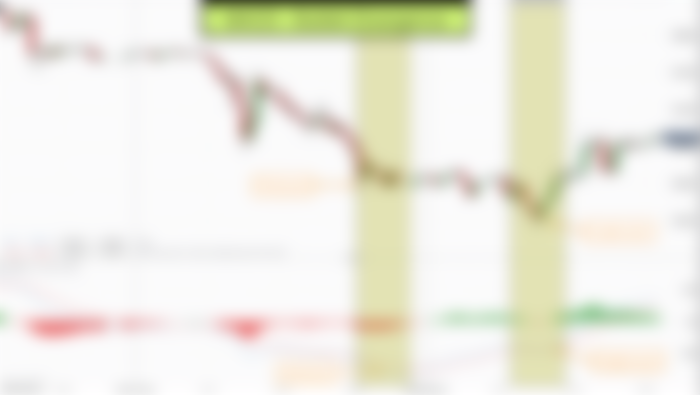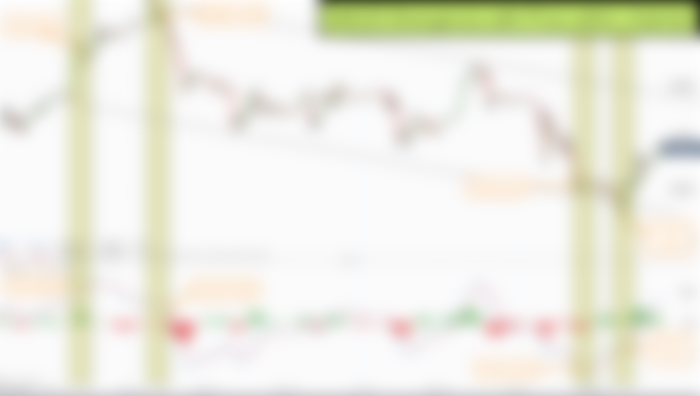There are a number of advanced metrics that can be used to evaluate crypto trading patterns, but none is as well-known or straightforward as the Moving Average Convergence Divergence (MACD).
The MACD can be used to determine if a current short-term price movement is following the same path as a longer-term price movement. You can do it by subtracting the longer-term average from the short-term one to transform averages into momentum swings, as the name implies.
Many traders regard the MACD as the go-to trend-following crypto trading technical indicator, and knowing how it operates will help them appreciate its popularity.
MACD Components

MACD line
It is made up of a 12-day exponential moving average (EMA). Due to their price change sensitivity, EMAs are favoured over standard moving averages. By subtracting the 26 days EMA (26 EMA) from the 12 days EMA (12 EMA), the MACD line is obtained.
Signal line
It's the MACD line's 9-day EMA (9-day EMA). The trading signals are generated by the line's interaction with the MACD line in terms of divergence, convergence, and crossing.
The Histogram
It depicts the distinction between the MACD and signal lines. When the MACD line is higher, it is positive; when the signal line is higher, it is negative.
MACD Trading Signals
Although the terminologies used can appear to be complex, the detailed visual articulation makes this measure fairly straightforward. The following are important trading signals:
MACD and Signal Line Crossover
When the MACD line and the signal line cross, this is referred to as a crossing. A bullish or bearish cross may occur.

When the MACD line crosses the Signal line, it suggests a bullish condition. It's a bullish symbol that's normally followed by a sharp rise in share prices. Since prices are rising, it offers a strong consumer incentive to buy.
A bearish case is one in which the MACD line crosses and falls below the signal line, indicating a negative situation. Such a condition is often correlated with stock price crashes, which is typically a sign that it's time to sell shares to avoid losing money.
It should be remembered, however, that the MACD and signal lines cross frequently. Other MACD signs, as well as other indicators like RSI and volume, should be considered before making a trade decision.
MACD and Zero Line Crossover
The MACD oscillator's midpoint is defined by the zero row. The MACD line is equal to zero at this stage, which means the 26 EMA and the 12 EMA are equal. It is also known as the centerline. This is where the line is. As a result, the horizontal is set to zero, which also serves as the basis for the histograms.
When the MACD line crosses over the zero line, it indicates that the market is bullish, prompting a buy answer. The crossing indicates that short-term prices are better than longer-term prices when the 12 EMA is higher than the 26 EMA. When the MACD crosses below the zero points, it signals a bearish condition that stimulates a cell response. This is due to the fact that long-term situations are superior to short-term ones.
It is not a mutually exclusive requirement to sell due to the existence of frequent crosses between the two lines during a trading day. Other signals must be taken into account.
MACD-price Divergence
A MACD-price divergence occurs when MACD movements do not correspond to price movements. Observing the MACD location when the price prints a swing high (peak) or a swing low is a reasonable representation (trough).
Divergence indicates a bullish situation when
The price makes a lower low while the MACD indicator makes a higher low.
Although the price makes a higher low, the MACD indicator makes a lower low.
The first condition of a bullish divergence is depicted in the graph below.

If there is a bearish theme, it is said to be bearish.
The price has made a higher high, but the MACD has made a lower high.
Although the price has a lower high, the MACD has a higher high.
Just before explaining the bullish divergence, the graph below shows the first state of bearish divergence on its left half.

Divergence isn't the only reason to buy or sell; other measures like the RSI, stochastic, and other MACD signals should be considered as well. It is important to ensure that there is a consistent space between the highs for bear markets and the lows for bull markets, as well as a significant difference between the two highs or lows.
Line Movements
The general movements of the MACD and signal lines may also trigger a buy or sell response.
When both lines go up at the same time, the markets are indicating a bullish state. When both lines begin to fall, the market becomes bearish. The results function well in combination with other signals.
Overbought Conditions
Although the MACD is an excellent trend following tool, it can also signal overbought or oversold stocks in the market.
When there is a large and long distance between the MACD line and the Signal line, as well as between both lines and the zero line, the condition is known. As a result of the over-extended market situation, traders would inevitably pull back, signalling a sell response.
Conclusion
The ease with which MACD can be used as a trend following trade indicator is the reason for its popularity. What a dealer, also a novice, needs to do is keep track of the lines and how they communicate.
At times, the MACD's various components can generate conflicting signals. Traders would be smarter if they take into account all of the information and influences in each of the five signals. The decision to buy or sell becomes more rational when the vast majority of signs point to either a bullish or bearish situation. Other types of technological metrics should be considered even then.


